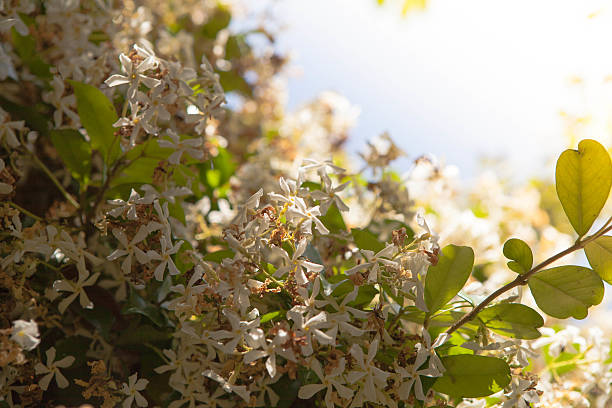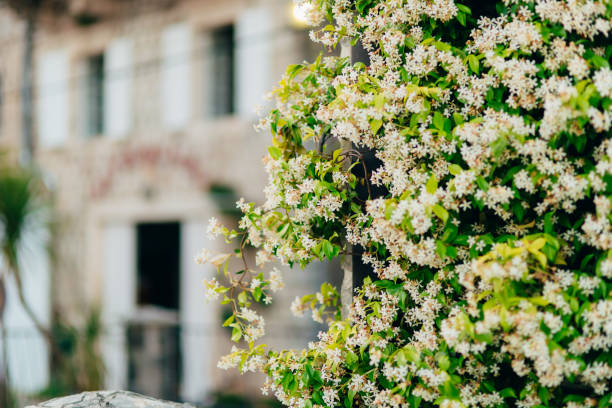When Is the Best Time To Prune Star Jasmine?
The best time to prune star jasmine is summer, right after it has finished flowering in the spring. The flowers will have turned brown and shriveled by summer, indicating that they are ready to be snipped. If you have a larger plant, use secateurs or hedge shears. Electric hedge trimmers can be used to form large star jasmine hedges into a neat shape and make the job easier.
The star jasmine can produce a second flush of flowers in late summer after you remove the first flush of blooms at the beginning of the season. Those extra flowers can be removed by doing a second trimming, which will make the plant look more uniform and tidy. Remove a few inches only to allow the plant to be shaped.
Star jasmine can be trimmed again during the fall to shape the plant for the winter. Each stem should be trimmed to a precise length. As the name suggests, climbing star jasmine can climb a fence or a screen with the help of long stems. Ensure that the stems are kept to a manageable length by snipping the ends.
Trim the stems of star jasmine regularly to keep the plant under control. Long stems can spread out and quickly fill a space.
Avoid cutting star jasmine in the fall or winter. There won’t be any new flowers on the star jasmine during this time. It will almost be dormant and won’t grow any new flowers at all. In the winter and early spring, the star jasmine will make sure the ends of the stems are ready for new flowers to grow.
To cut star jasmine at this time, you can cut off the new flower buds and not get to see them bloom for a year or at least delay them.

Table of Contents
What Are the Benefits of Pruning Star Jasmine?
There are benefits of pruning star jasmine, including:
- It helps to keep the appearance of your Star Jasmine tidy.
- It prevents the spread of plant disease and pests.
- With proper jasmine pruning, you’ll have more visually appealing plants that bloom more frequently, allowing you to enjoy these benefits for a longer time.

How To Prune Star Jasmine?
Deadheading Star Jasmine
Star jasmine needs to be deadheaded in late summer to produce a second flush of flowers. Trim the drooping spring flowers off the plant with sharp secateurs once they’ve become brown and dry out the soil.
Trimming below the bottom of the flower bunch is not necessary. Your star jasmine will remain full and lush if you do this. It is possible to increase the density of the star jasmine by trimming it.
Shaping Star Jasmine
The shape of your star jasmine should be considered whenever you prune or deadhead it. Take care when removing any plant material because it may not regrow until the following spring if you remove it.
Star jasmine can be shaped to cover a screen, climb a pole, or climb a lattice. As an added bonus, you can train star jasmine to grow as a windbreak or to hide an unsightly wall or shed with it. Pruning a small amount of star jasmine at a time is the key.
Do Not Prune Too Hard
It is vital to prune star jasmine in small increments to avoid damaging the plant. Pruning too severely can result in bare patches on the tree and a strange shape on the tree’s trunk. If you prune back patches too hard, the hardwood may be unable to regenerate its leaves, and you may end up with a bare hole in your yard.
Water After Pruning
Although star jasmine is drought-tolerant in the wild, it is significantly less drought-tolerant in containers than in the ground. Water at least twice a week, more frequently during the summer. During the winter, the plant requires significantly fewer quantities to be added. It is fairly common practice to incorporate compost into potted plants to retain moisture and reduce water evaporation.
Add Fertilizer
A slow-release fertilizer will assist your star jasmine in growing new flowers and stems following pruning. A boost in nitrogen will aid the plant in rapidly replacing leaves. Add some pelleted chicken manure for slow release, top dress with aged cow manure, or use a liquid fertilizer. A rapid dose of nutrients is delivered, resulting in fantastic growth following pruning.
